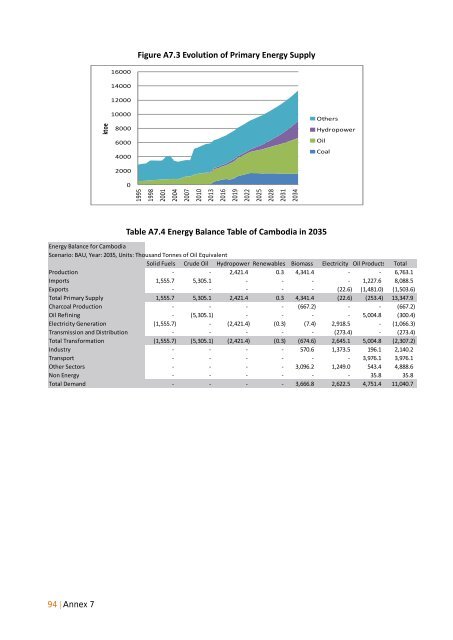RPR_FY2015_08
Create successful ePaper yourself
Turn your PDF publications into a flip-book with our unique Google optimized e-Paper software.
3.1 Passive Design Strategy<br />
For a hot and humid climate, all buildings have the primary function of providing an<br />
internal environment with thermal comfort, which is desirable for the purpose of<br />
occupancy in buildings. Therefore, understanding weather conditions will offer<br />
opportunities to minimise solar heat gains, which will lead to saving capital costs<br />
due to the reduction in the capacity of air-conditioning equipment and ultimately<br />
saving energy costs in the operation of buildings.<br />
The primary objective in a passive design strategy is to minimise solar thermal<br />
heat gains and some examples of the key elements to be considered in this strategy<br />
are as follows:<br />
a) Building orientation with the longer building axis facing North–South so<br />
that the narrow ends of the building face East–West.<br />
b) Building facades that provide shading for windows.<br />
c) Fenestrations (windows) that provide low thermal transmittance and an<br />
effective shading coefficient of glazing used in the fenestration system.<br />
d) Building and insulating materials that provide low thermal transmittance<br />
of the opaque walls and roofs.<br />
e) Strategic landscaping that provides shading from the sun, shielding from<br />
heat reflection in the surrounding spaces, and the creation of a cooler<br />
microclimate around the building.<br />
f) Daylighting design that captures the natural daylight to reduce the need<br />
for artificial lighting.<br />
g) Natural ventilation that makes use of the natural forces of wind and<br />
buoyancy to deliver sufficient fresh air and air change to ventilate enclosed<br />
spaces without the need to rely on air conditioning.<br />
h) Measures to prevent air leakage as uncontrolled mixing of outside air<br />
with air-conditioned space requires more energy to remove moisture and<br />
heat gain contributed by air leakage.<br />
3.2 Active Design Strategy<br />
Having minimised solar heat gain and having maximised the capture of daylight and<br />
natural ventilation, an active design strategy will play a key role to complete the<br />
achievement of energy efficiency in buildings.<br />
The extent of energy efficiency in active systems often depends on budget<br />
allocations. If budget permits, sophisticated energy management and lighting<br />
control systems may be considered. The minimum approach in an active design<br />
strategy is to cover systems that consume higher shares of energy, i.e. airconditioning<br />
systems and lighting.<br />
Annex 4 | 79



